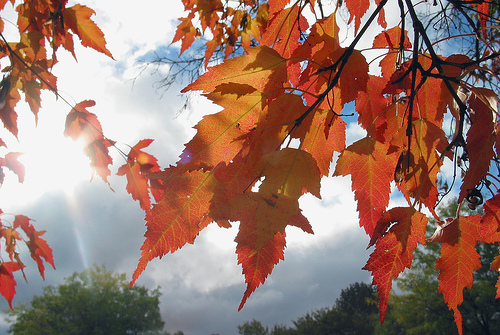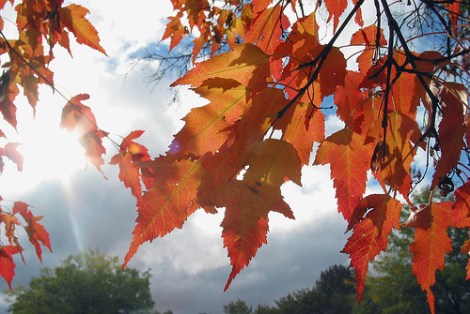If you haven’t gotten a chance to head out to the country and eyeball some funky-colored leaves yet, allow me to provide some good news: You’ve got 10 more days to do so than your parents did.
From Climate Central:
Using satellite-based measurements of the Normalized Difference Vegetation Index (NDVI), which gauges leaf cover over wide areas, researchers at the Seoul National University in South Korea found that the end of the growing season occurred progressively later over the course of their 26-year study. By noting the time of year changes in color occurred most rapidly, the researchers could track when fall started between 1982 and 2008.

Climate CentralClick to embiggen.
As you probably guessed, this is probably linked to climate change. Big shock.
When leaves change color — what scientists call the transition from “active growth to leaf-drop” — is based on several natural factors. Chillier temperatures associated with the onset of fall are one, along with the shorter fall days; changes in rainfall from one season to the next play an important role as well (a dry summer means that leaves will die and drop earlier). This is why we don’t see the changes we associate with fall happen at exactly the same time every year — there’s so much natural variation in the weather.
However, as this study shows, the average time these changes occur can shift over the course of many years. This long-term trend toward a later autumn is related to the fact that temperatures overall are getting warmer.
By the year 2050, then, I’m going to assume that leaves will change colors in April? Something like that, I bet.





